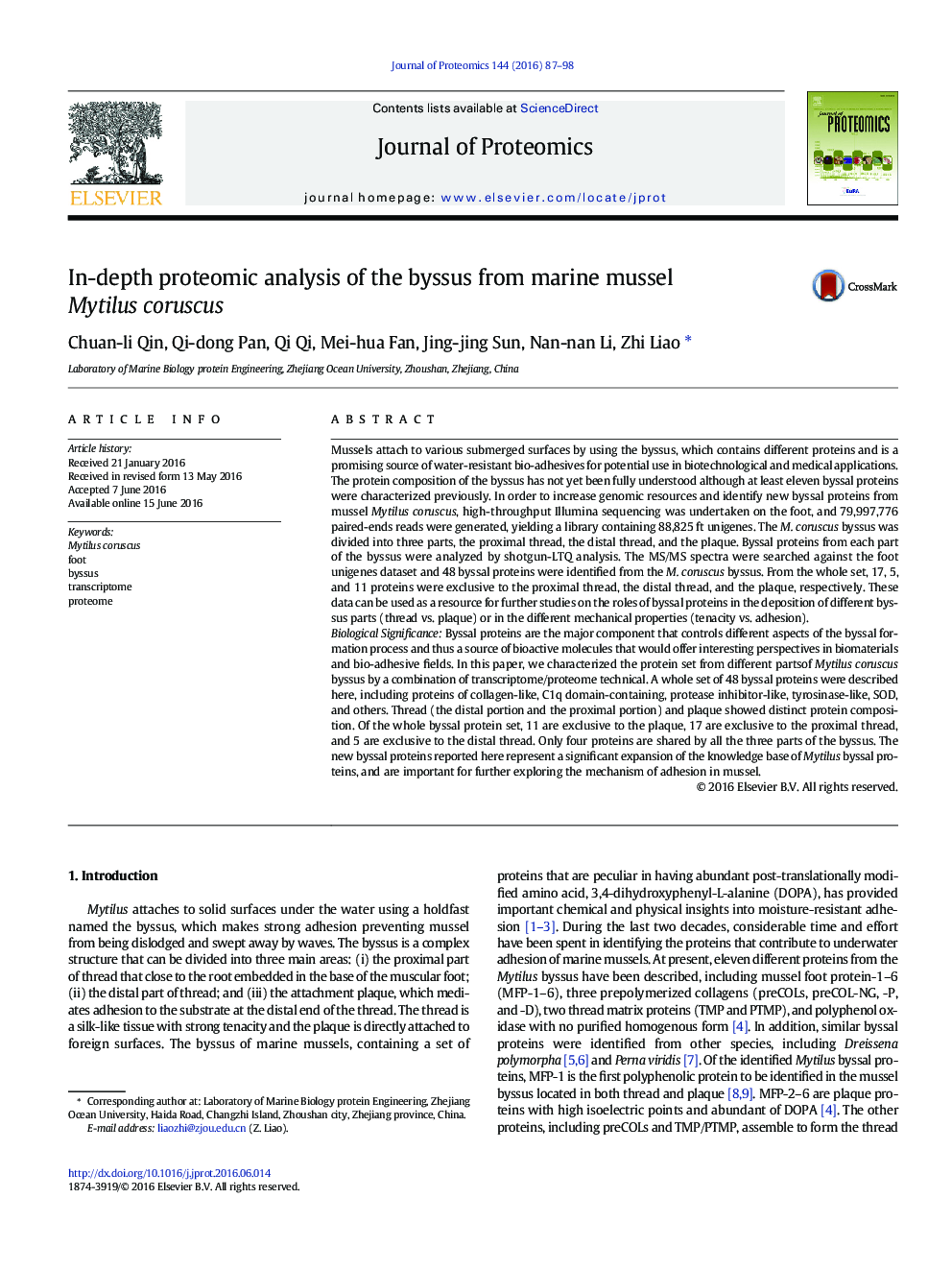| Article ID | Journal | Published Year | Pages | File Type |
|---|---|---|---|---|
| 1225127 | Journal of Proteomics | 2016 | 12 Pages |
•Mytilus coruscus byssus can be divided into the proximal thread, the distal thread, and the plaque.•The transcriptome of M. coruscus foot was analyzed.•The proteome of different parts of the byssus were determined.•48 byssal proteins were identified from the M. coruscus byssus.•Different protein composition from different byssal parts were analyzed.
Mussels attach to various submerged surfaces by using the byssus, which contains different proteins and is a promising source of water-resistant bio-adhesives for potential use in biotechnological and medical applications. The protein composition of the byssus has not yet been fully understood although at least eleven byssal proteins were characterized previously. In order to increase genomic resources and identify new byssal proteins from mussel Mytilus coruscus, high-throughput Illumina sequencing was undertaken on the foot, and 79,997,776 paired-ends reads were generated, yielding a library containing 88,825 ft unigenes. The M. coruscus byssus was divided into three parts, the proximal thread, the distal thread, and the plaque. Byssal proteins from each part of the byssus were analyzed by shotgun-LTQ analysis. The MS/MS spectra were searched against the foot unigenes dataset and 48 byssal proteins were identified from the M. coruscus byssus. From the whole set, 17, 5, and 11 proteins were exclusive to the proximal thread, the distal thread, and the plaque, respectively. These data can be used as a resource for further studies on the roles of byssal proteins in the deposition of different byssus parts (thread vs. plaque) or in the different mechanical properties (tenacity vs. adhesion).Biological SignificanceByssal proteins are the major component that controls different aspects of the byssal formation process and thus a source of bioactive molecules that would offer interesting perspectives in biomaterials and bio-adhesive fields. In this paper, we characterized the protein set from different partsof Mytilus coruscus byssus by a combination of transcriptome/proteome technical. A whole set of 48 byssal proteins were described here, including proteins of collagen-like, C1q domain-containing, protease inhibitor-like, tyrosinase-like, SOD, and others. Thread (the distal portion and the proximal portion) and plaque showed distinct protein composition. Of the whole byssal protein set, 11 are exclusive to the plaque, 17 are exclusive to the proximal thread, and 5 are exclusive to the distal thread. Only four proteins are shared by all the three parts of the byssus. The new byssal proteins reported here represent a significant expansion of the knowledge base of Mytilus byssal proteins, and are important for further exploring the mechanism of adhesion in mussel.
Graphical abstractFigure optionsDownload full-size imageDownload high-quality image (160 K)Download as PowerPoint slide
